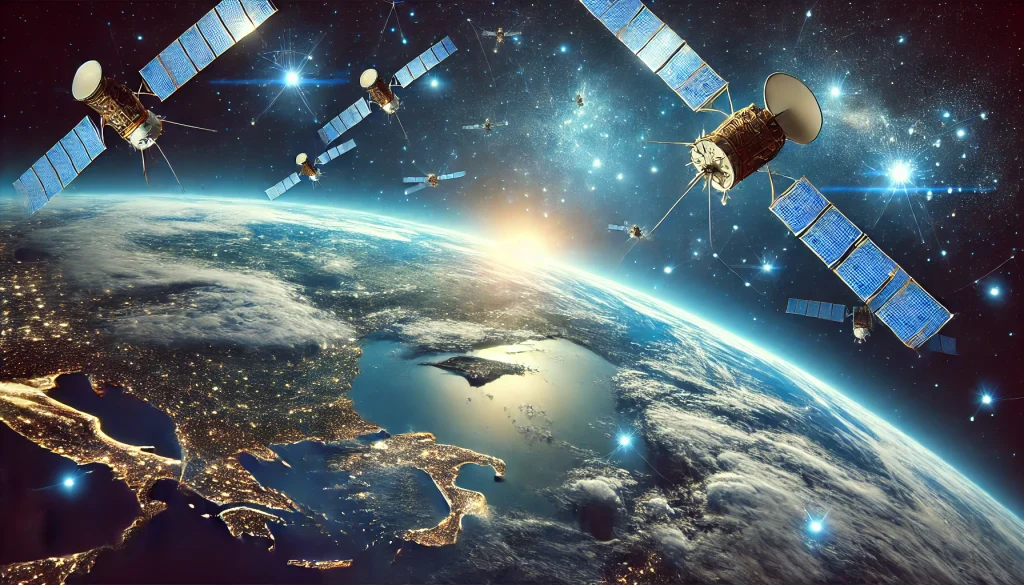The Revolutionary Impact of Elon Musk's Starlink on Global Internet Access
In the digital age, access to the internet is often considered a basic human need, and efforts to expand global connectivity are at the forefront of technological innovation. One of the most groundbreaking initiatives in this field is Elon Musk’s Starlink, a satellite-based broadband service developed by SpaceX. This ambitious project aims to provide high-speed internet to underserved regions, including remote areas where traditional infrastructure is either unavailable or impractical. But what exactly is Starlink, and how is it transforming the global internet landscape?
What is Starlink?
Starlink is a satellite internet constellation project initiated by SpaceX, founded by Elon Musk. The idea behind Starlink is simple yet revolutionary: deploy thousands of small satellites in low Earth orbit (LEO) to create a high-speed, low-latency internet network that can deliver broadband services to almost every corner of the globe. Unlike traditional internet services, which rely on cables and fiber optics, Starlink uses satellite communication to connect users to the internet.
By 2024, Starlink is expected to have thousands of satellites in orbit, creating a vast network capable of providing internet service to regions that have been historically difficult to reach, including rural, remote, and disaster-stricken areas.
Expanding Global Connectivity
Bridging the Digital Divide
One of the most significant impacts of Starlink is its potential to bridge the digital divide. In many parts of the world, especially in rural areas, access to reliable and fast internet is a luxury, and the cost of installation for traditional broadband services can be prohibitive. Starlink offers a more affordable and accessible alternative. With an internet connection through a simple satellite dish, users in underserved locations can enjoy broadband-like speeds without the need for extensive ground infrastructure.
For example, in areas like sub-Saharan Africa, parts of Southeast Asia, and remote regions in North America, Starlink has the ability to bring high-speed internet where it was once deemed impossible. This accessibility is particularly beneficial for educational initiatives, healthcare services, and businesses operating in these regions.
Supporting Rural Economies
In addition to providing access to individuals, Starlink is also playing a vital role in supporting rural economies. In the past, farmers, small businesses, and rural entrepreneurs have struggled to access reliable internet services. Starlink changes that by providing affordable and consistent connectivity, enabling businesses in these areas to expand their reach, adopt new technologies, and increase productivity.
Education, too, stands to benefit from the widespread availability of Starlink. Students in remote areas will have access to online learning resources, video conferencing with teachers, and collaborative tools that were previously out of reach.
Starlink’s Technological Advancements
Low Earth Orbit Satellites
Traditional satellite internet services use satellites positioned in geostationary orbit, which are placed about 35,786 kilometers above Earth. While these satellites can cover large areas, they suffer from high latency due to the long distance between the satellite and the ground. In contrast, Starlink’s satellites are positioned in low Earth orbit (LEO), typically around 550 kilometers above Earth’s surface. This significantly reduces latency and improves the speed and reliability of the internet connection.
By utilizing LEO satellites, Starlink is able to provide faster response times, smoother streaming, and quicker load times compared to traditional satellite-based internet services. This makes it ideal for applications such as video conferencing, online gaming, and real-time collaboration, which require low latency for optimal performance.
Starlink’s Scalability
As the number of Starlink satellites in orbit increases, the network’s capacity and coverage will expand exponentially. Unlike traditional internet providers, which rely on a set number of ground stations and infrastructure, Starlink’s satellite-based model allows it to scale effortlessly. The addition of more satellites increases the overall speed and reliability of the service, meaning that as more people use Starlink, the quality of service continues to improve.
The scalability of Starlink is essential for meeting the growing demand for high-speed internet. With more people around the world relying on the internet for education, work, and entertainment, expanding satellite coverage to accommodate these needs is critical.
Addressing the Challenges of Starlink
While the potential benefits of Starlink are undeniable, the project is not without its challenges. One of the most pressing concerns is space debris. With thousands of satellites planned for launch, there is an increased risk of collisions and the creation of space debris, which could pose a threat to both Starlink’s satellites and other objects in orbit. SpaceX has made efforts to mitigate this risk by designing Starlink satellites that can be deorbited safely at the end of their life cycle, but it remains a challenge that must be addressed to ensure the long-term viability of the project.
Additionally, there are concerns regarding regulatory approval and the possible monopolization of the satellite internet market. Governments worldwide will need to establish regulations to ensure that Starlink operates fairly and responsibly. Moreover, the development of competing satellite internet services may affect Starlink’s pricing and availability, introducing uncertainty into the global market.
The Future of Starlink and Global Internet Access
Looking ahead, Starlink has the potential to fundamentally reshape the global internet landscape. With its mission to provide fast, affordable, and reliable internet to every corner of the globe, it could become a critical enabler of economic growth, technological innovation, and social progress.
As SpaceX continues to expand the Starlink network, and more satellite constellations are launched, the project will likely serve as a model for future initiatives aiming to provide universal internet access. The project could open up new possibilities for industries such as telemedicine, remote work, and e-commerce, and it may even serve as a platform for future technological advancements like autonomous vehicles and smart cities.
Conclusion
Elon Musk’s Starlink is a game-changer in the quest for universal internet connectivity. By leveraging the power of low Earth orbit satellites, Starlink promises to provide reliable, high-speed internet to even the most remote regions of the world, bridging the digital divide and enabling opportunities for education, business, and innovation. While there are challenges to overcome, the potential for Starlink to transform global internet access is immense, making it one of the most important technological developments of the decade. As the project continues to evolve, it may well pave the way for a truly connected world.






